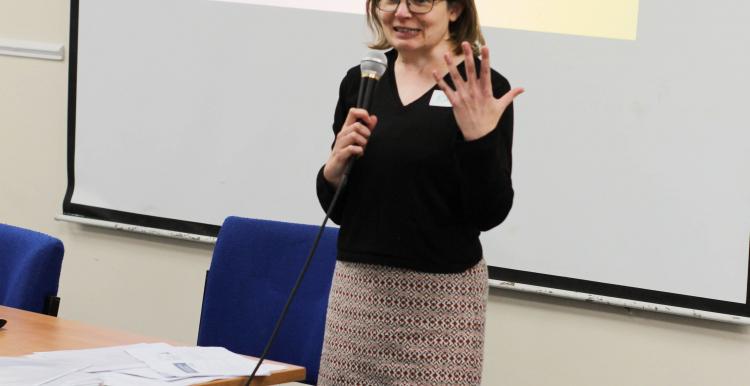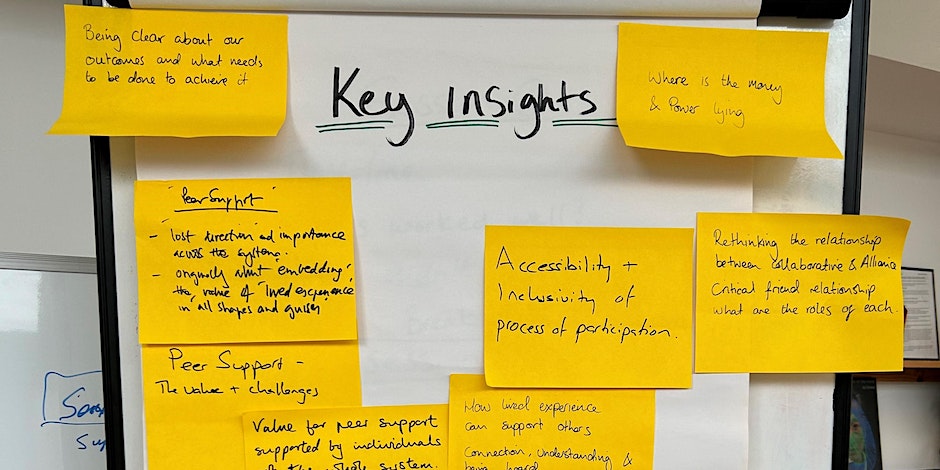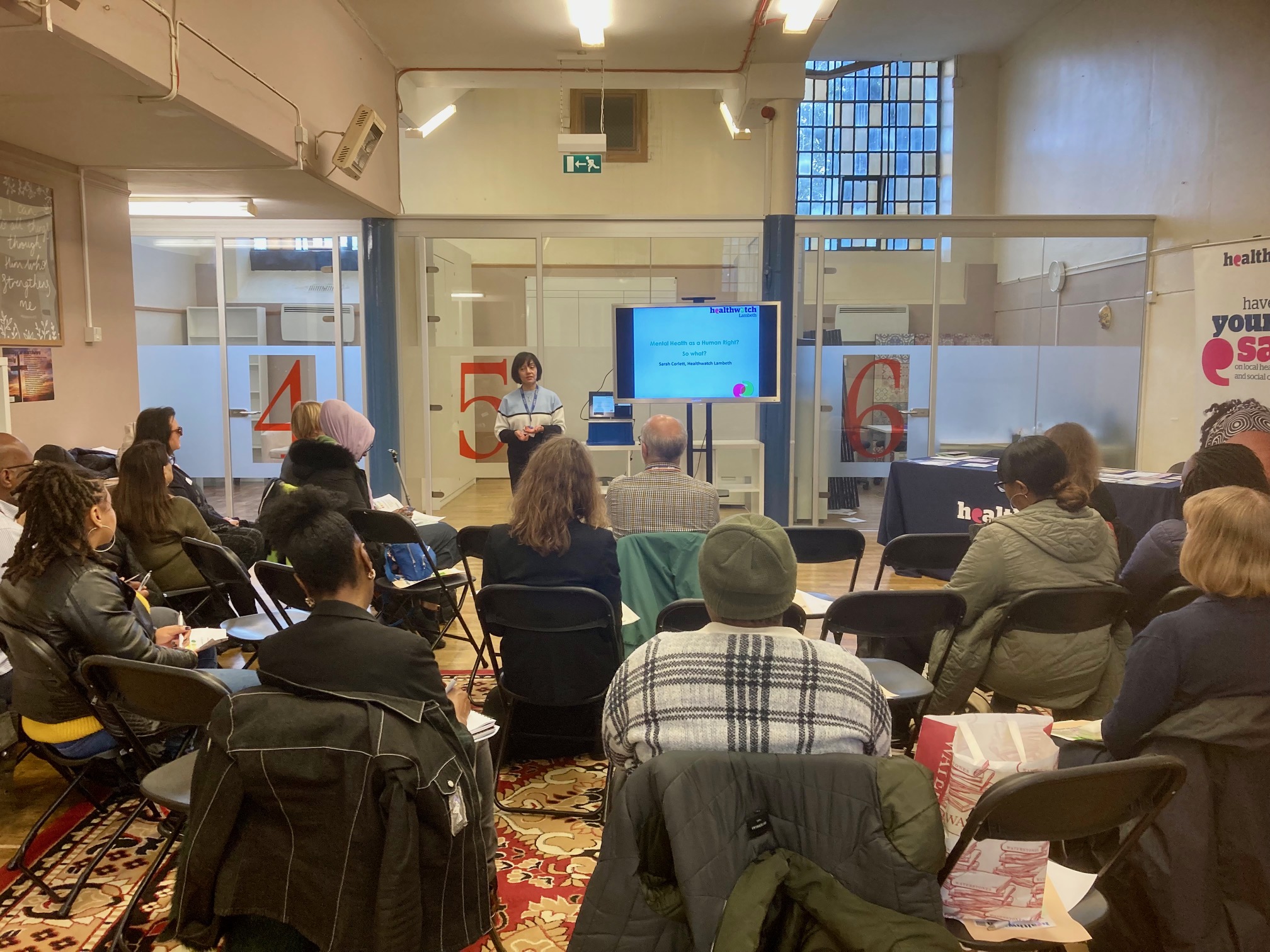Launching our position on public involvement from 2020

First of all, thank you for joining us!
We’d like to thank everyone who attended, ranging from partners in the local voluntary sectors, Lambeth commissioners and service representatives, researchers and people from the community, including a couple of young people.
Councillor Ed Davie set the tone by commending the positive experience with services in Lambeth he has had – but also noting that this is by far not everyone’s experience in Lambeth, and that is why we all need to work together to improve things. He touched on the difficulty of balancing power sharing and managing expectations when involving people, and highlighted that being honest about these things is key to good public involvement.
Why a new position statement?
 Healthwatch Lambeth has been supporting local engagement activities since we began, but with various changes happening in care systems and services, we need to be more proactive now. As a signatory to the Lambeth Together pledge which aims to improve how services across Lambeth work together, our role is to ensure that local people are involved in shaping and improving these services.
Healthwatch Lambeth has been supporting local engagement activities since we began, but with various changes happening in care systems and services, we need to be more proactive now. As a signatory to the Lambeth Together pledge which aims to improve how services across Lambeth work together, our role is to ensure that local people are involved in shaping and improving these services.
Over the last few months, we’ve been reflecting on the work we’ve done so far, taken part in International Association for Public Participation (IAP2) training and looked at different thinking on co-production.
We’ve come up with eight key ideas on participation which we’d like to get feedback on from people in Lambeth.
Our eight key ideas on participation
You can access the document here.
Our eight key ideas are:
- People have the right to be involved in shaping and improving services.
- Public participation is a spectrum (or ladder) that provides a range of opportunities for people to be involved.
- Each aspect of the spectrum offers benefits and none of the approaches is better than others.
- The best place on the spectrum for an engagement activity will depend on the decision or question that needs answering. A project may visit different places on the spectrum as it progresses. This may or may not include co-production (sharing power between services and people).
- We must be honest from the start about who has the decision making power in each project and what is on and off the table
- We must be clear and transparent about which members of the public are or should be involved in particular projects. For example, this might include service users, people who need a service but don’t currently use it, previous users, carers and families, and the wider community.
- Participation projects need to be designed with the principles of equality, diversity and accessibility at their heart.
- Good information provision for everyone involved is essential to every stage of a participation project, including giving people feedback on the outcome.
The workshops explored how the principles would be applied

Groups used our framework to think about what appropriate involvement should look like on some example topics,
At the AGM, we used the workshops to explore how the principles we want to use moving forward look in practice, using four topics as examples.
focusing on:
- Who should be involved in making that decision
- How much power they should be given
- How the power will be given
- What issues or barriers there might be
From the outputs of the four workshops, we identified some stakeholders we are already involved with, and new ones we need to involve in our work. We also considered barriers that we may face, such as lack of time to attend meetings, lack of publicly available information to shape our thinking around what needs to change, and lastly language and decision making structures centred around professional frameworks which are not accessible to everyday people.
How is power given to people? It will be important to keep track of this.
One attendant commented that it would be important to track when and how power has been given to people, so that the people who carry out the involvement activities are held accountable.
Our partners from Lambeth Together thought the proposal was very positive and fitted well with the participation objectives of the Lambeth Together Alliances.
Partners noted that they need to do their bit to ensure that our proactive approach to public involvement becomes an internalised process within the Lambeth system.
What we will do now
This position statement is a draft. With public participation at the core of everything we do, we want to ensure that the views of Lambeth people are reflected in our work.
We are now looking at the feedback from the event.
We also invite people to join us for a coffee morning on the 12 December to give feedback on our 8 Principles. This is for both people who didn’t make it to our AGM, or people who want to come back and share their views further. We want to hear from local residents, patients, community representatives and groups, people who work in health and social care, and people in the voluntary sector.
You can also email your comments or phone in to share your comments.
We will then come up with the final version by January 2020.
Working with Lambeth Together
In the meantime, we are also talking to Lambeth Together team about how we can support them to design their public involvement activities for the year ahead. We will discuss where there is scope for us to apply our principles, and explore with partners how we can link up our involvement approach with key priorities coming up for Lambeth Together.
We will be ensuring we are up to date on key decision making dates from the Lambeth Together Alliances, so that we can work together to build a robust public involvement plan for pressing issues.
Once the plan is set, we will update people here on our website, through our newsletters and social media streams.


